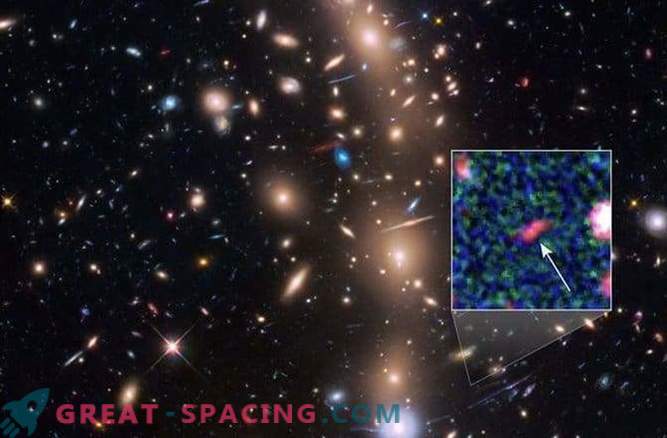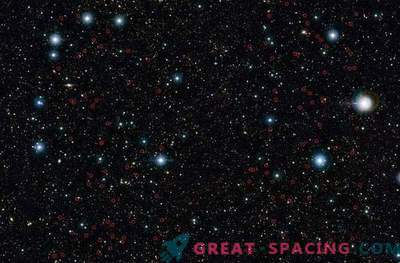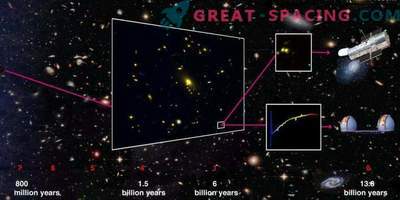
Recently, scientists have discovered a previously unknown galaxy. She immediately interested researchers, as it is very different from previously found. It may help to track all the stages of the formation and development of galaxies.
Peering into the Universe distant from us is the same as looking into the past.
In telescopes, it seems quite tiny. She was even given a name - Mystery. According to approximate estimates, the age of the detected galaxy is more than 13.8 billion years, which means that it no longer exists. Also with the stars - some of the stars, the light of which we still see, have long died. The Hubble and Spitzer telescopes managed to make an image of the very early stage of the galaxy evolution. Our Universe was probably populated by many similar newborn galaxies.
The researchers found a lonely galaxy with other young galaxies in the amount of 21 pieces near the edge of the universe.
"Thanks to this discovery, the team of scientists was able to practice for the first time working with extremely dull objects formed after the Big Bang," said the head of the project Leopoldo Infante, an astronomer at Pontifical Catholic University in Chile, in her address.
The ancient "newborn" galaxy was called the "Mystery", because it is the first unexplored firstborn on such a serious level. In its structure, it has a lot in common with the Large Magellanic Cloud, where the star formation of dwarf galaxies orbiting the Milky Way is well traced. The super-weakly glowing Galaxy Mystery was discovered by pure chance. The fact is that when creating photographs, Hubble took a position from which it was possible to redirect light from other nearby galaxies and clusters of stars to the Mystery, thereby highlighting it. This “accident” acted as a magnifying glass, concentrating the entire glow of galaxies, and redirected the light 20 times brighter to the object.
To calculate the approximate distance between galaxies and their age, it is necessary to illuminate them with an infrared scanner and then determine the exact color (accurate indicator) on the infrared spectrum. Galaxies, which have appeared long ago, are usually denoted much redder, due to the rapid speed of their movement from us. Although the Mystery light was originally blue or white, it only means that it moves very quickly, so it cannot have any red hue.
Astronomers have discovered this galaxy using a natural lens, but its more powerful anthropogenic "colleagues" will be able to do this much faster and less problematic. So far, the new James Webb space telescope is currently under construction. Once it is ready, new limitless scientists will open up to scientists, perhaps in the study of the Mystery.











































